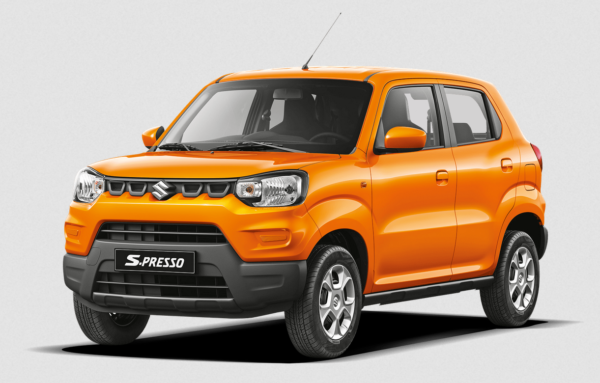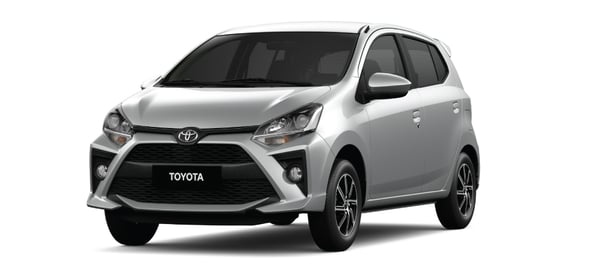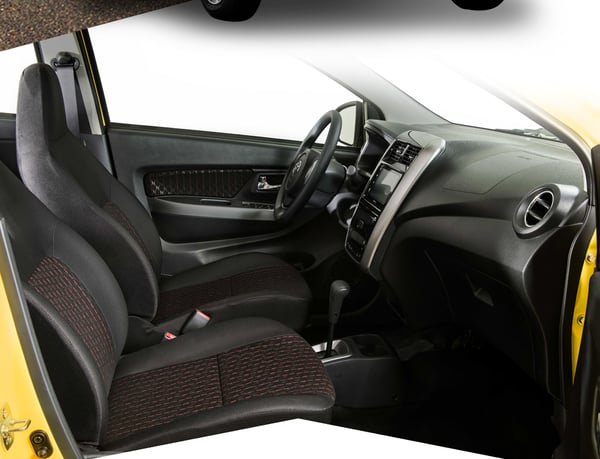Mini hatchbacks are often associated with being budget-conscious and minimalistic. But there’s definitely more than meets the eye, as owning a compact car comes with a lot of benefits.
First, smaller cars are easier to maneuver than sedans and muscle SUVs. With that, you can easily squeeze into tight spots. Small hatchbacks can also be conveniently parked into tiny slots. Overall, this is the perfect car if you live in a city with smaller streets and heavy traffic jams.
Among the most practical hatchbacks to consider are the Suzuki S-Presso and the Toyota Wigo. Both have a proud Japanese heritage, so by default, you’re already assured of top-notch quality.
But if you want to know which one will make a better choice, check out this Suzuki S-Presso vs Toyota Wigo guide. To make things clear, this comparison review features the brands’ base models.
Suzuki S-Presso vs Toyota Wigo Review: Which is the Better Hatchback?
Vehicle Selling Price

The base prices of the Suzuki S-Presso and the Toyota Wigo are under PHP 600,000. The Suzuki S-Presso fetches a price tag of PHP 523,000 while the Toyota Wigo’s price starts at PHP 568,000. At present, the Suzuki S-Presso has only one variant. Toyota, on the other hand, has four, and the most expensive trim is priced at PHP 700,000.
Winner: Suzuki S-Presso
Read more: 21 Cheapest Cars in the Philippines You Can Buy in 2021
Car Insurance Cost
Insuring your car is a must, so you need to factor in the annual insurance cost of the car that you’re planning to get. The Toyota Wigo’s cheapest insurance costs PHP 11,426 per year or around PHP 952 per month. The Suzuki S-Presso’s yearly insurance, on the other hand, is considerably more affordable at PHP 10,603 or PHP 884 per month.
You can check out other insurance options for both cars by using Moneymax’s comparison tool.
Winner: Suzuki S-Presso
Read more:
- Comprehensive Insurance Guide in the Philippines: How to Insure Your Car
- CTPL Insurance in the Philippines: A Quick Guide for Filipino Motorists
Engine and Performance
Both transporters are designed with a 1.0-liter, 3-cylinder gasoline engine that’s paired with a five-speed manual transmission system. However, the difference is made clear in the performance. The Toyota Wigo can churn out a power output of 65 hp and a torque of 89 Nm. The S-Presso has an edge over the Wigo in this department as it generates 67 hp of power and 90 Nm of torque.
Winner: Suzuki S-Presso
Fuel Capacity and Efficiency
When it comes to fuel capacity, the Suzuki S-Presso can hold a maximum of 27 liters of gas while the Toyota Wigo can carry 33 liters. Since both cars are small and light, they won’t burn fuel that easily. The Toyota Wigo registers its fuel economy around 22 km/L while the Suzuki S-Presso has an average fuel consumption between 25 and 27 km/L.
However, keep in mind that fuel economy largely depends on the distance that you cover and the quality of the regular car maintenance.
Winner: Suzuki S-Presso
Safety and Security
The gravitas of this Suzuki S-Presso vs. Toyota Wigo guide doesn’t only lie in the performance of the engine. It’s also important to consider the safety and security features that each car offers.
The Suzuki S-Presso boasts an anti-lock braking system, parking sensors, airbags for the driver and the front passenger, rear seat belts, seat belt warning, door ajar warning, child safety locks, side impact beams, engine check warning, and day and night rear view mirror. Additionally, the S-Presso is outfitted with a new-generation platform called HEARTECT. Through this feature, the car’s frame is characterized by smooth and continuous curves that efficiently disperse impact energy during collision.[1]
Meanwhile, the Toyota Wigo also has driver and front passenger airbags, child safety locks, anti-lock braking system, rear seat belts, seat belt warning, crash sensor, front and side impact beams, door ajar warning, and engine check warning.
The S-Presso almost takes the cake in this round with more features, such as engine immobilizer and anti-theft device―something that the Wigo doesn’t have.
But the Wigo has a neutralizer, which is its recognition from the ASEAN New Car Assessment Program (NCAP).[2] Generally, the Wigo has a score of 4 out of 5 stars in the NCAP Test. Its child occupant safety is also rated 4 out of five.
Winner: Tie
Size

The outcome of this round generally favors the Toyota Wigo. The length of the Suzuki S-Presso measures at 3,565 mm. The Toyota Wigo’s length, meanwhile, measures at 3,660 mm. When it comes to width, the Toyota Wigo still has more room to offer with its 1,600-mm size while the S-Presso just measures at 1,520 mm. The only advantage that the S-Presso has is its height, which measures at 1,565 mm―about 45 mm taller than the Wigo.
Despite the differences in size, both cars can seat up to five passengers. Just keep in mind, though, that S-Presso passengers may find themselves closer to each other because of its more compact width. The taller passengers of the Wigo, meanwhile, may struggle to stay comfortable inside the car.
Winner: Toyota Wigo
Exterior
The Wigo’s design is already an icon on its own, but you can’t deny that the S-Presso’s looks are truly eye-catching. The latter doesn’t look like a mini hatchback. It actually looks like the quirky younger brother of a big SUV. So, if uniqueness is what you’re after, the Suzuki S-Presso is definitely for you.
While the Toyota Wigo sports the usual hatchback design, it’s loaded with exterior features that you won’t find in the S-Presso. It has projector headlights, front fog lights, power-adjusting side mirrors with turn signal, shark fin, and rear spoiler. Its wheels are also made of durable alloy.[3]
Winner: Toyota Wigo
Interior

Despite the size differences, both the Suzuki S-Presso and the Toyota Wigo offer generous cabin space. But the S-Presso lags behind when it comes to cargo space. The rear side of the S-Presso can only accommodate loads of up to 239 liters while the Wigo can carry 56% more with its 422-liter compartment.
Both cars boast fabric seats and a manual climate control system. They also have a touchscreen infotainment system. But the Toyota Wigo has four speakers (placed in front and on the rear) while the S-Presso only has two.
What seals Toyota’s runaway win in this round is its four power windows. The S-Presso’s power windows are only available in the front section, meaning you’ll have to manually adjust the rear windows to lower or raise them.
Winner: Toyota Wigo
Warranty
If you want to save money in case an unmediated problem arises, you need to choose a car that has a longer warranty period. The Toyota Wigo’s warranty is a bit limited at 100,000 km or three years. But the Suzuki S-Presso does things better by offering a five-year warranty at 100,000 km. On top of that, Suzuki also offers a FREE one-year periodic maintenance service. This is something that you can take advantage of if you want to save on your car’s upkeep costs.
Winner: Suzuki S-Presso
Suzuki S-Presso vs Toyota Wigo: The Result
To help you arrive at a practical decision, check out this Suzuki S-Presso vs Toyota Wigo tally.
| CRITERIA | SUZUKI S-PRESSO | TOYOTA WIGO |
|---|---|---|
| Price | ☑️ | |
| Engine and Performance | ☑️ | |
| Fuel Capacity and Efficiency | ☑️ | |
| Safety and Security | ☑️ | ☑️ |
| Size | ☑️ | |
| Exterior | ☑️ | |
| Interior | ☑️ | |
| Warranty | ☑️ | |
| Insurance | ☑️ | |
| Total | 5 Points | 3 Points |
Overall winner: Suzuki S-Presso
Final Thoughts
When you come to think of it, this Suzuki S-Presso vs Toyota Wigo review somehow shows two sides of the coin. One side shows the tried-and-tested sensibilities embodied by the Toyota Wigo, and the other side shows the promising future of hatchbacks represented by the relatively new Suzuki S-Presso.
Whichever side you choose, make sure that your final decision is guided by the important variables stated above. That way, you won’t only avoid buyer’s remorse but also get to make the most of your purchase.

Sources:
- [1]About Suzuki S-Presso
- [2] Safest Hatchbacks in the Philippines According to the ASEAN NCAP (AutoDeal, 2021)
- [3] About Toyota Wigo









